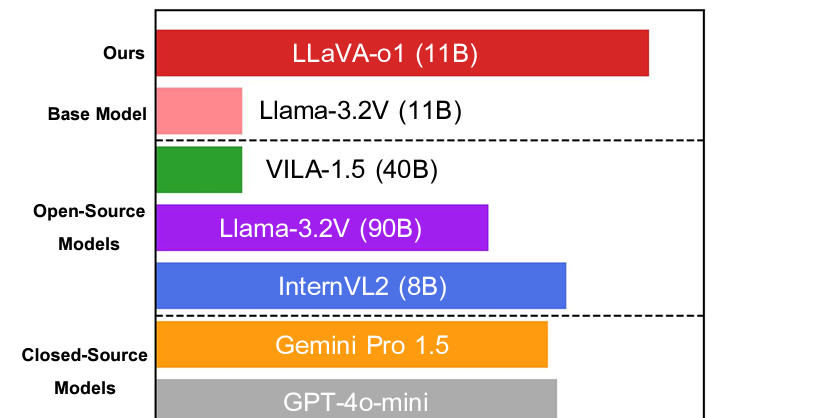Smaller Vision-Language Models Are Leading the Way

Smaller Vision-Language Models Are Leading the Way
The introduction of LLaVA-o1 demonstrates how smaller models are achieving performance levels comparable to, or even exceeding, much larger Vision-Language Models (VLMs). LLaVA-o1, an 11-billion-parameter model, matches or surpasses the performance of models like VILA-1.5 (40B) and LLaMA-3.2V (90B) on multimodal reasoning benchmarks, as shown in the chart above.
How LLaVA-o1 Achieves Efficiency
LLaVA-o1 incorporates a structured, four-stage reasoning process (summarization, captioning, reasoning, and conclusion) and uses a dataset of 100,000 structured annotations for training. Combined with a stage-level beam search for efficient scaling during inference, it demonstrates that thoughtful design can yield significant results without ballooning model size.
Implications for Vision-Language AI
Efficiency Over Scale: LLaVA-o1 proves that smaller models can handle complex tasks traditionally dominated by much larger systems. This means enterprises can adopt cutting-edge VLMs without investing in excessive computational resources.
Faster, Cost-Effective Deployment: Smaller models like LLaVA-o1 reduce inference times and operating costs, enabling faster integration into workflows.
Open-Source Accessibility: As an open-source model, LLaVA-o1 provides enterprises with a robust alternative to closed-source systems, allowing for greater control, flexibility, and privacy in deployment.
The Shift Toward Smaller Models
The success of LLaVA-o1 signals a broader industry shift: smaller, more efficient models are becoming a viable choice for advanced AI tasks. They democratize access to high-performing AI, reduce reliance on massive infrastructure, and open opportunities for wider adoption in vision and language applications.
As research focuses more on architecture and optimization rather than brute force scaling, smaller models are poised to meet the needs of enterprises looking for efficient and scalable AI solutions. The era of efficient AI has arrived.